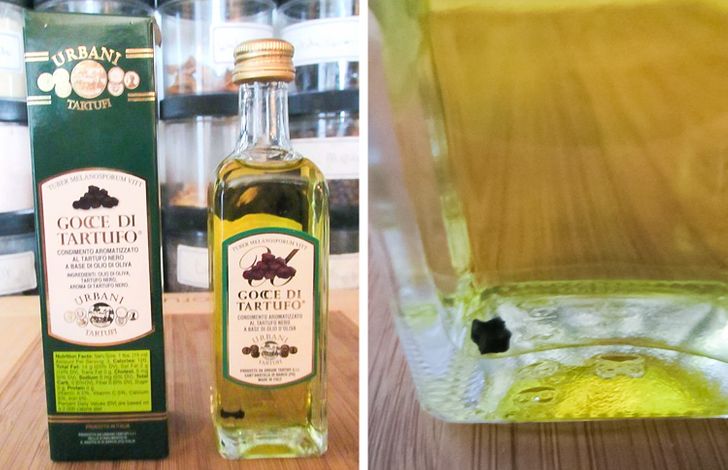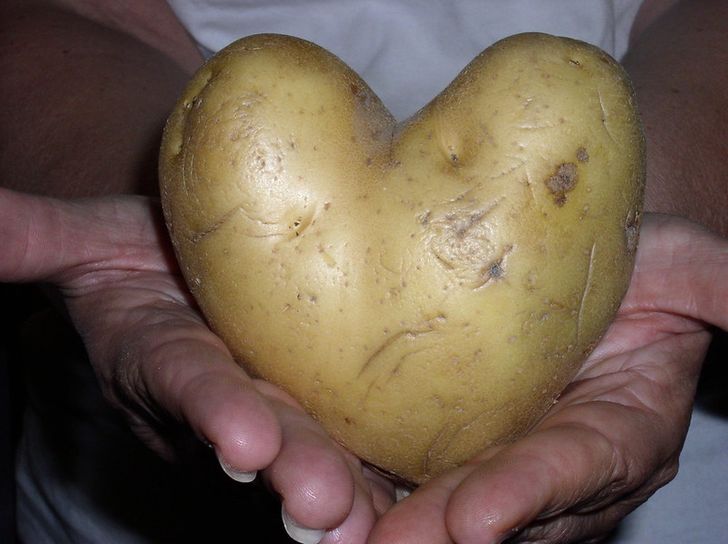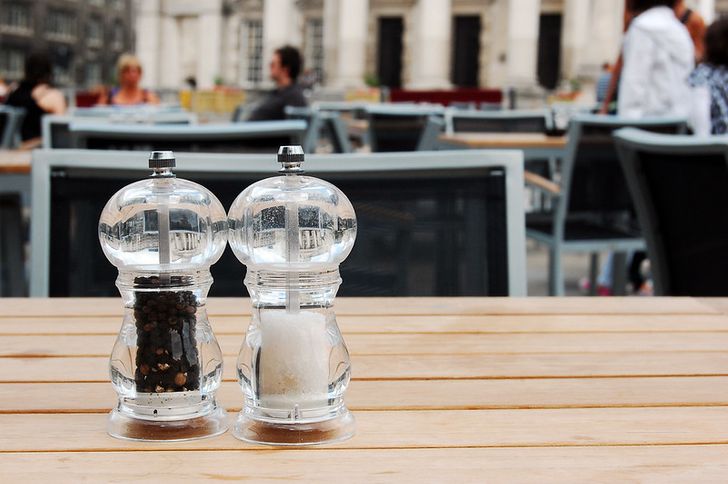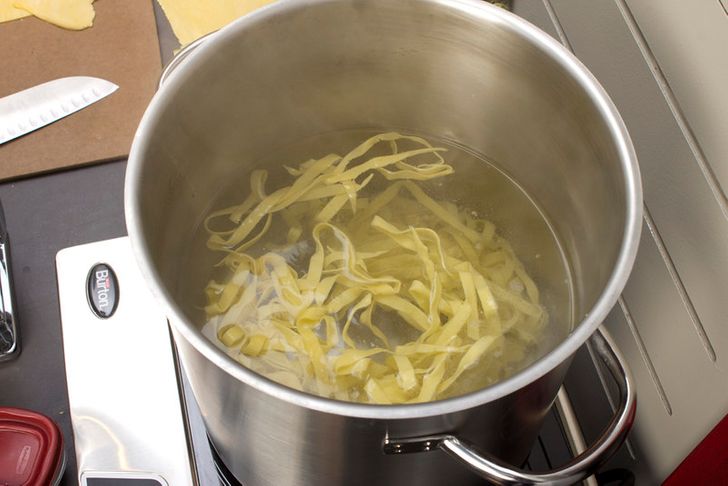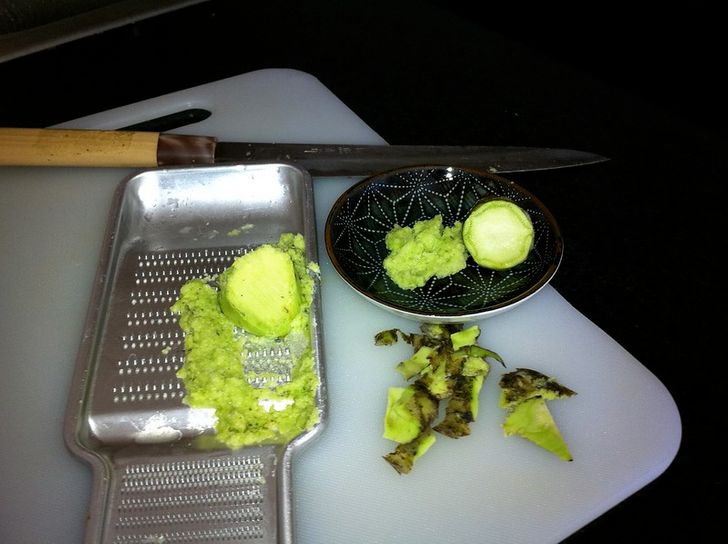First of all I need to stop reading food- articles while being on a diet... and second so many useful info! Sharing ;)
15+ Facts About Food and Cooking We Used to Mistakenly Believe

Though cooking is one of the most basic, ancient human skills, it’s still full of dozens of myths and misconceptions. It was only recently that gastronomy started using a scientific approach, and most often, the findings were quite unexpected. An author of the telegram channel known as Food&Science, Vsevolod Ostahnovich, studies the works of culinary research and shares the most curious discoveries with his followers.
We at Bright Side are always happy to see such endeavors because we like to cook. That’s why we’ve read Ostahnovich’s channel from the first post to the last, and now (with the author’s permission), we’re going to let you in on why it’s better to salt steaks in advance and why oil shouldn’t be added to pasta at all.
-
Truffle oil is a good example of the strange discrepancy between expectations and reality. On one hand, the manufacturer writes its composition on each bottle: olive oil and flavors identical to natural ones (porcini mushrooms and truffle, for example). On the other hand, many people are still sure that this is a premium and expensive product. Let’s look at it more closely. Olive oil should be kept in light-tight packaging, which means that those transparent bottles boasting the presence of a slice of truffle inside are offering a product of bad quality by default. But let’s put this aspect aside. The main aromatic component of truffle oil is 2,4-Dithiapentane, also known as truffle sulfide. This synthetic compound is responsible for the truffle flavor, which means that there is nothing scary in the composition of truffle oil. The main thing to understand is that you’re not dealing with oil infused with truffles, but rather, with oil that simply has a synthetic additive.
-
Every time someone recommends getting a steak out of the fridge and waiting about 30 minutes to cook it, a scientist somewhere in the world starts to boil over! Further research has proven that it’s impossible to distinguish 2 pieces of beef — one of which went into the frying pan right after having been taken from the fridge and another that spent 2 hours in the warm kitchen before being cooked. Moreover, it would take the same time to reach the same internal temperature for both of them.
-
There’s a myth that says you can’t boil the same water in a kettle twice because the water becomes “heavy.” So, is this true? It’s water, which includes deuterium or heavy hydrogen (that’s why the water is called “heavy”). It appears during electrolysis, which is when a current passes through it. In order to get 1 gallon of heavy water, you’ll need to pour 7.95*10 to the thirtieth-degree tons of water. It exceeds the mass of Earth 1,135 million times. So if you decide to boil a kettle of “heavy” water, don’t be afraid to consume it. Our bodies contain deuterium, which makes “heavy” water harmless to us. What really happens while boiling is an increase in salt concentration during water evaporation. At the same time, the water itself doesn’t become “heavy” or radioactive.
-
Potatoes are great helpers in the kitchen but are these vegetables really that powerful? Of course, it can satisfy your hunger but can it save a soup that was oversalted? There’s a popular opinion that says putting several pieces of raw potatoes into oversalted liquid absorbs any extra salt and can salvage the soup. But this opinion doesn’t have any scientific proof. It’s true that those pieces will become salty but if you put a shower luffa inside instead of the potatoes, the luffa would become salty too. And this is no surprise because salt gets into the potatoes together with the water and stays there, but it doesn’t affect the overall concentration of salt in the soup.
-
If you’ve ever cooked salmon, you probably know of the strange white substance that appears on the surface of the fish while it cooks. The good news is that this white substance is albumin, a protein that is safe to consume. But no one ever wants to eat this stuff and eating around it can become somewhat of an obstacle, especially in restaurants. But there’s some good news: this problem is quite easy to solve. Put your salmon in a 10% salt solution for 10 minutes before you start to cook it. The salt helps to partially dissolve these proteins and they’ll no longer appear on the surface as the fish heats up — it will remain inside the muscles instead. This technique works with any type of fish.
- It’s known that sugar can help fight a bad mood but it can’t fight a bitter taste. Scientists are well aware that it’s salt that suppresses a bitter taste. That’s why it tastes good when you add a pinch of NaCl to coffee or chocolate. Try holding your own experiment — peel a grapefruit and try it without salt. Then put some salt on it and you’ll see how your perception of the product will change. That being said, next time you break up with someone, don’t rush to Baskin Robbins — just go to the kitchen and eat some salt!
-
So you’ve arrived at a restaurant and have become lost in a sea of cheese options, including mozzarella, burrata, stracciatella, and ricotta. “Ah, those beautiful Italian names! What diversity,” you might think. But believe it or not, it’s all the same cheese. This is known as one of the biggest conspiracies among all cheese-makers. At first, they heat up milk which then leavens and ferments. The milk splits into 2 parts: curd and whey. If the curd gets kneaded in hot water, it becomes super plastic-like. Mozzarella balls are made of this substance. If you add cream to the curd and dilute it to a mushy state, you’ll get stracciatella. If you decide to wrap stracciatella into mozzarella, you’ll get burrata. If you have enough time and patience, you can get the tenderest and most fragile type of cheese from whey, which is known as ricotta (literally meaning “recooked” in Italian). That’s why there are so many types of cheeses in restaurants.
-
So you buy an expensive, heavy set of automatic grinders. You put big crystals of salt into one and peppercorns into another and get ground spices with one press of a button. It’s cool but only somewhat. Grinding pepper makes sense because it contains volatile essential oils, which are released during grinding and can affect your perception of the dish. Salt doesn’t contain any volatile substances. Its only task is to make the dish salty. That’s why it’s not important whether it’s freshly-ground or not when it comes to your dish.
- Some people believe that steaks should be salted only after cooking, blaming it on the fact that salting a steak before frying it will dry it out. I’m not sure whether the reason behind this is due to osmotic pressure but I have bad news (or good) regardless. Salt really draws moisture from meat, but that’s actually good. The drier the meat is on the surface, the faster it will get that nice crust while frying. Moreover, if you salt a piece of meat beforehand, the salt will get inside the meat and the steak will have a perfect degree of saltiness. What’s really amazing is the fact that salt not only seasons the meat as it penetrates inside but it also transforms and denatures some proteins. Denaturated proteins retain moisture much better. Thus, a pre-salted steak will not only be tasty but it also runs the risk of being juicier.
-
There are culinary myths that are easy to bust thanks to quite simple logic. For example, some people add oil to the water when they cook pasta and believe oil will prevent the pieces from sticking to each other. However, this isn’t true. But it’s not because of oil that floats on the surface of the water but rather, because of the starch that pasta itself contains. Once it hydrates, gets enough water, and swells, the pieces of pasta will stop sticking to each other. It’s the first couple of minutes that matter while cooking pasta — just make sure to stir it during this time and nothing will be able to spoil it, even that tomato paste you’re going to use. By the way, it’s better not to use any oil after boiling pasta, otherwise, the oil will envelop the paste, prohibiting the sauce to stick to the pasta.
-
Green, red, white, and black — there are so many types of peppercorns. But how can you understand what you’re dealing with? These are all fruits of the same plant, Piper nigrum, but they’re collected at different stages of ripeness.
1) Black pepper consists of unripe fruits that are scalded and dried.
2) White pepper is the same pepper but soaked and peeled from the outer shell.
3) Green pepper comes from unripe seeds that are treated with sulfur dioxide to preserve color.
4) Red pepper comes from ripened fruits that are soaked in brine immediately after harvest so that they don’t change color.
-
When was the last time you ate an unripe fruit or vegetable? Perhaps you’ll recall your childhood when you accidentally bit into a green apple. But that’s not true. In fact, we constantly eat unripe fruits and vegetables without even knowing it. Here are 2 examples:
1. The cucumber is a fruit from the pumpkin family, which, like any pumpkin or melon, is considered ripe when it turns yellow. But we don’t eat such fruits because they can have a sour or bitter taste.
2. Cauliflower is a vegetable plant, or an inflorescence to be more precise — or a head with the beginnings of inflorescences to be even more precise. If it ripens, then all the inflorescences will turn into yellow flowers, which we wouldn’t eat because we’re used to eating this vegetable unripe.
-
Next time you enjoy sushi, close your eyes and taste a bit of wasabi alone. Do you feel the taste of horseradish in your mouth? That’s exactly what it is — mixed with some mustard and a colorant. It’s unlikely that any of us have tried real wasabi. That’s because it needs 3 years to grow and is extremely expensive ($160 for 2 pounds wholesale) and difficult to farm (due to the special climate, soil, and humidity necessary). Only about 5% of restaurants use the real thing.
-
There’s a myth known as “the taste map of the tongue,” which says certain zones on our tongue are responsible for recognizing certain tastes. The tip of the tongue is supposedly responsible for the perception of sweet tastes, and the root is responsible for verifying bitter taste. But it’s totally untrue. Dip your tongue in saline and see (or feel) everything for yourself. The most shocking thing is that those taste receptors are located on more than just the tongue. They can be found all over the body, from the throat and lungs to the brain. Our guts, for example, have receptors for sweet and umami tastes.
-
We consume 2 times more salt than recommended on average, which is 5.8 grams per day. This problem can be solved in different ways.
The first option is to use small crystals of salt since they dissolve better and you’ll require less salt to change the taste of your food.
The second option is a perfect lifehack for bakers: you can alternate layers of salty and non-salty dough. It’s been proven that thanks to this contrast, the flour product will seem 30% saltier than it actually is.
The third option is cheating the brain. This is actually quite easy to do — you only need to use the smell of a product that’s traditionally associated with salt in order to make a dish seem saltier to us. For example, consider the smell of anchovies. Of course, a muffin with the smell of anchovies wouldn’t be appealing, which is why it’s better to opt for a more universal option, like the smell of bacon.
-
There are a bunch of “cooking rules” that people convey to each other in vain. But they can easily be broken! For example: “You don’t need to cut lettuce leaves with a knife, it’s better to tear them with your hands!” If you really like the look of torn, uneven edges, go ahead! But if you think that leaves look better with this method (as some people claim), you should know that it doesn’t matter how you “dismember” them, whether it be with your hands or a knife. The damage, in any case, will be the same — but the edges will be more even if you do it with a knife.
Here’s another common rule: “Pasta is ready when it starts to stick to the wall of the boiling pot.” Is there anyone who still abides by this today? If yes, then you may as well stop because there’s simply no sense in this. All pasta varies in thickness and composition, which is what affects the degree of its stickiness to the sides of the pot. In any case, it’s better to check if the pasta’s ready simply by tasting it.
“Flour should be sifted,” many people say. But this isn’t necessary. Oftentimes, it’s nothing more than an extra step in the cooking process. What’s the point of sifting then — to get rid of those lumps that appear in the flour? Even if they’re there, a whisk can make them disappear. Additionally, many people talk about the importance of flour aeration. Frankly speaking, you can ignore this step — it’s not just sifting that gets chefs those puffy pastries.
Many of us cook this or that way only because our grandparents used to do so. But as time goes on and we gain more and more knowledge, everything changes. Please tell us which facts from this compilation served as true revelations for you!
Comments
That kettle thing... WOW. I use the kettle for boiling water all the time actually ..
truffle oil is something really weird. The price of it is higher than the sky, but there is not so much of a truffle here. I don't understand this hype with it
Related Reads
12 Moments That Prove Kindness Isn’t Weakness—It’s Power Disguised as Empathy

I Refuse to Pay for the Office Christmas Party I Won’t Attend, Now HR Is Targeting Me

12 Stories That Prove Little Acts of Kindness Never Stay Little

I Refused to Have My MIL on Another Trip If She Won’t Babysit—Her Slapback Was Brutal

14 Stories That Prove Kindness Can Turn Regular People Into Heroes

12 Unseen Sacrifices Moms Make to Put Their Kids First

My MIL Refused to Believe in My Son’s Gluten Allergy

I Excluded My Wife From My Kids’ Core Memories—She’s Too Busy Working

My DIL Excluded Me From Gender Reveal Party, Saying I’m "Not Family"—Big Mistake

20 Tutors Reveal What Really Goes On Behind Closed Doors

I Absolutely Refuse to Delay My Retirement to Save My Spoiled Daughter and Her Son

I Refused to Leave My Legacy to My Adopted Grandkid—He’s Not My Real Family

